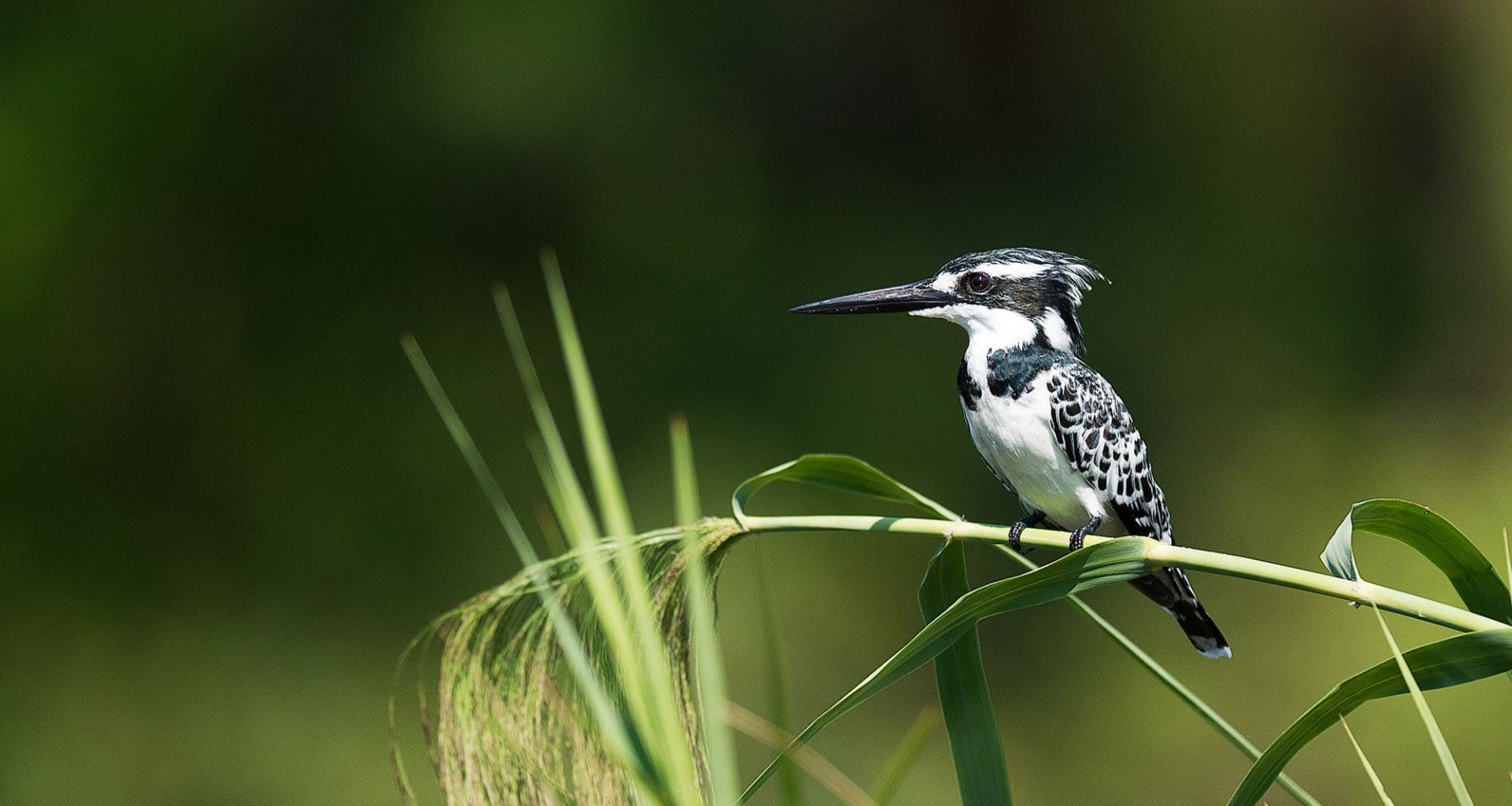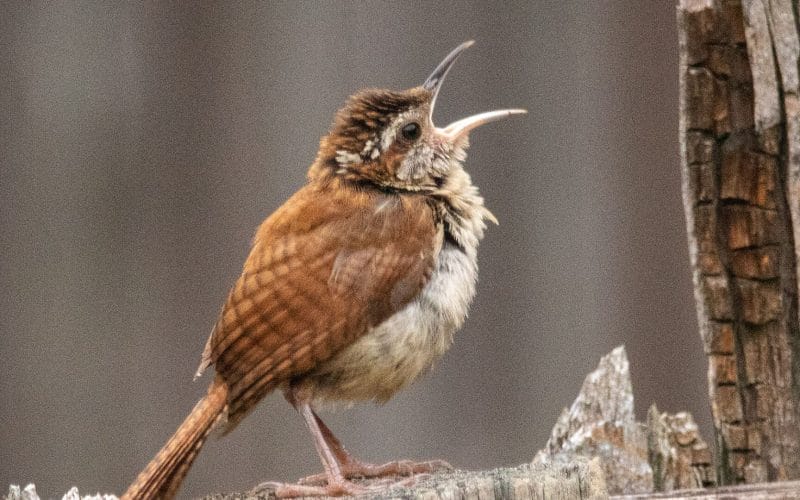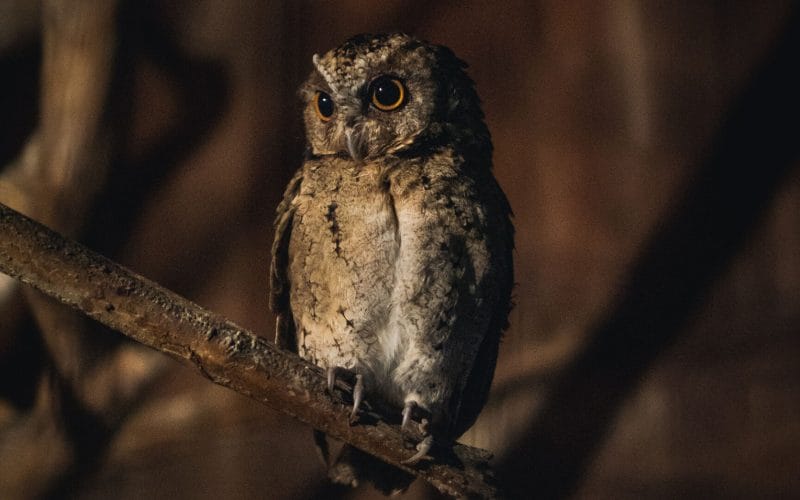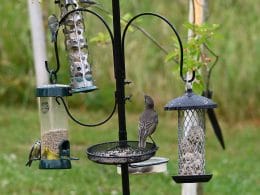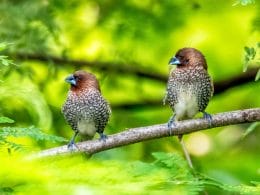Kingfishers are some of the most fun birds to watch. They are very active hunters and will provide quite the show if you can find one. So what is the best time of day to see kingfishers?
The best time of day to see kingfishers is in the morning, especially after a storm. This is because the fish and insects they prey on often come out of hiding after a storm, which makes for a great meal for them.
So, if it is a terrible day, windy and rainy, get your bird-watching gear ready. Check the weather forecast and be an early bird to catch the, um, ‘worm.’
Let’s learn more about kingfishers and the best time of day to see kingfishers!
What are Kingfishers?
Kingfishers (Alcedinidae) are usually brightly colored birds, medium to small in size. The smallest being the African dwarf kingfisher, about 3.9”inches long and weighs 0.32 oz.The Laughing Kookaburra of Australia is the heaviest and weighs in at 18 oz and 17” inches long. All kingfishers have large heads, pointy tails, and unusually large, pointed beaks.
The kingfisher is widely distributed but found mostly in more tropical, temperate, and forested areas in the world. There are 114 species in its family, three subfamilies, and 19 genera.
Kingfishers have been part of the earth for a long while. The oldest fossils of kingfishers dated back to 30 to 40 million years ago and were found in Wyoming in the United States. In ancient Greece, it was called Halcyon and is now one of the names of the three subfamilies.
All kingfishers have excellent vision and color vision. They have nictitating membranes that protect their eyes like a pair of goggles. Their eyes also adapt to the refraction between the air and the water, which is very important to catch prey underwater.
The most widespread kingfisher in the U.S. is the Belted Kingfisher.
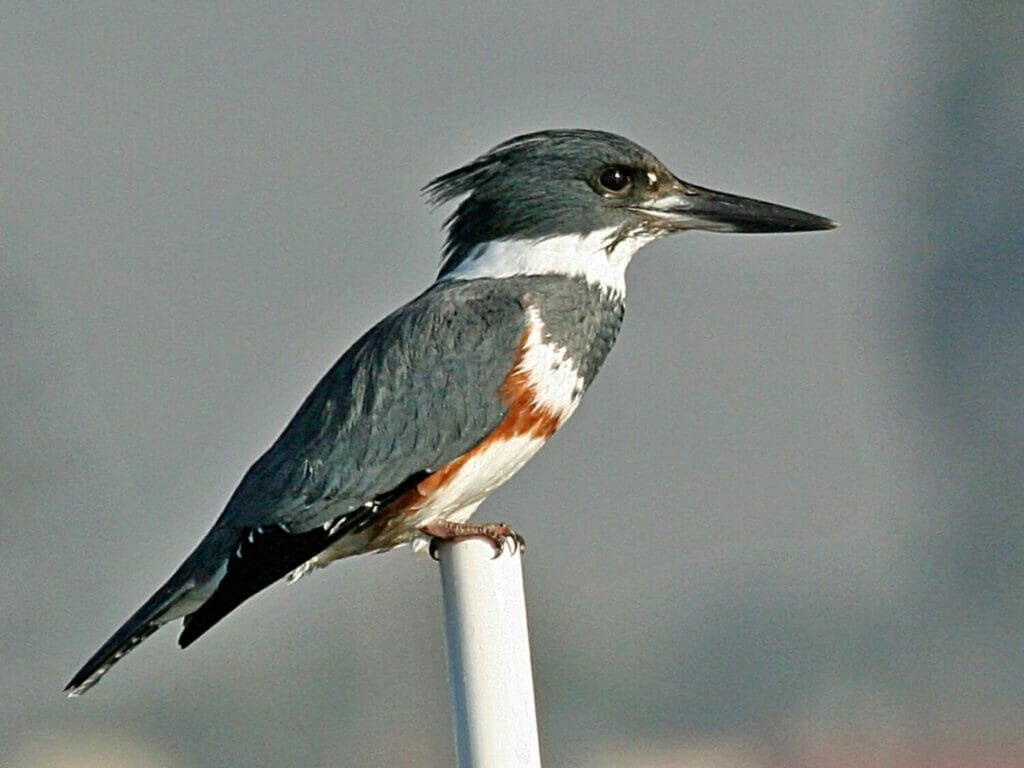
Where Do Kingfishers Live?
It is almost easier to look at the opposite. Kingfishers do not live in the driest deserts and do not live in the polar regions. Other than that, they have a large range of habitats. Asia, Africa, Australia, Europe, and the Americas, all the continents except Antarctica, have some species of kingfisher.
Kingfishers are territorial. Some will attack any other kingfishers in their area.
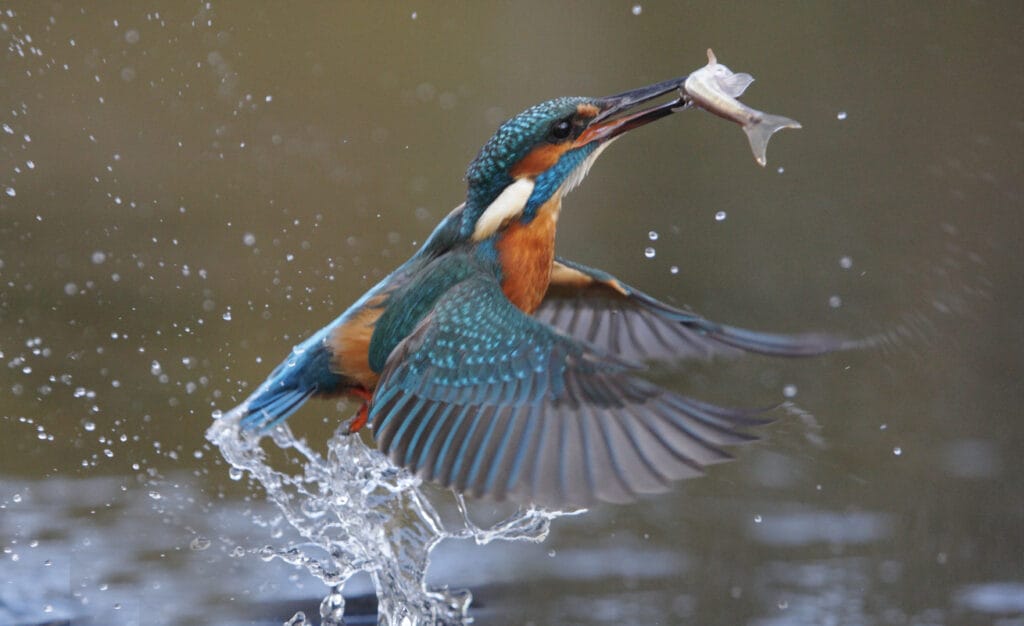
Author Note: The river-dwelling belted kingfisher is the most widely spread in North America and is fairly large at 12” inches. It is blueish grey around the head and breast, and only the females have a reddish-brown band across the front.
Kingfisher populations are generally healthy, but there are a few species endemic to certain areas that are critically endangered.
In the Pacific Islands and Southeast Asia, they are in decline due to deforestation. In South Africa, the half-collared kingfisher is on the IUCN Red List of Threatened Species. For Malaysia and the Philippines, the blue-banded kingfisher, the brown-winged kingfisher, and the Sulawesi kingfisher are threatened. In New Guinea, some paradise kingfishers are on the decline.

Are Kingfishers an Endangered Species?
Unfortunately, they are. The most endangered of them all is the Marquesan kingfisher.
It used to have a very small distribution between a few islands on the Marquesas chain. Now it is limited to a single island called Tahuata. This has been accredited due to the introduction of species like the house rat, great horned owl, and feral livestock.
The kingfisher is used as an indicator species to determine the health of a particular ecosystem where they occur. Just by their presence, or lack thereof.
Some kingfisher species are migratory. They dislike extreme cold and have been known to migrate shorter distances to warmer coastal areas or closer to the equator.
The Pied Kingfisher is a species of water kingfisher and specializes in fish hunting. It is the most widely distributed kingfisher in Africa and Asia. This kingfisher has a fast straight flight and can reach speeds of up to 50km/h. It hovers over the water observing its prey and then takes a dive into the water to catch the fish.
It was initially believed that the Pied Kingfisher (on the right) descended from a flight 1 million years ago from an ancestral American Green Kingfisher (on the left) when it crossed the Atlantic ocean. Their other suggestion is that the Pied Kingfisher and the American Green Kingfishers came from a common Old World species, and the green coloration has been lost on the pied kingfisher.
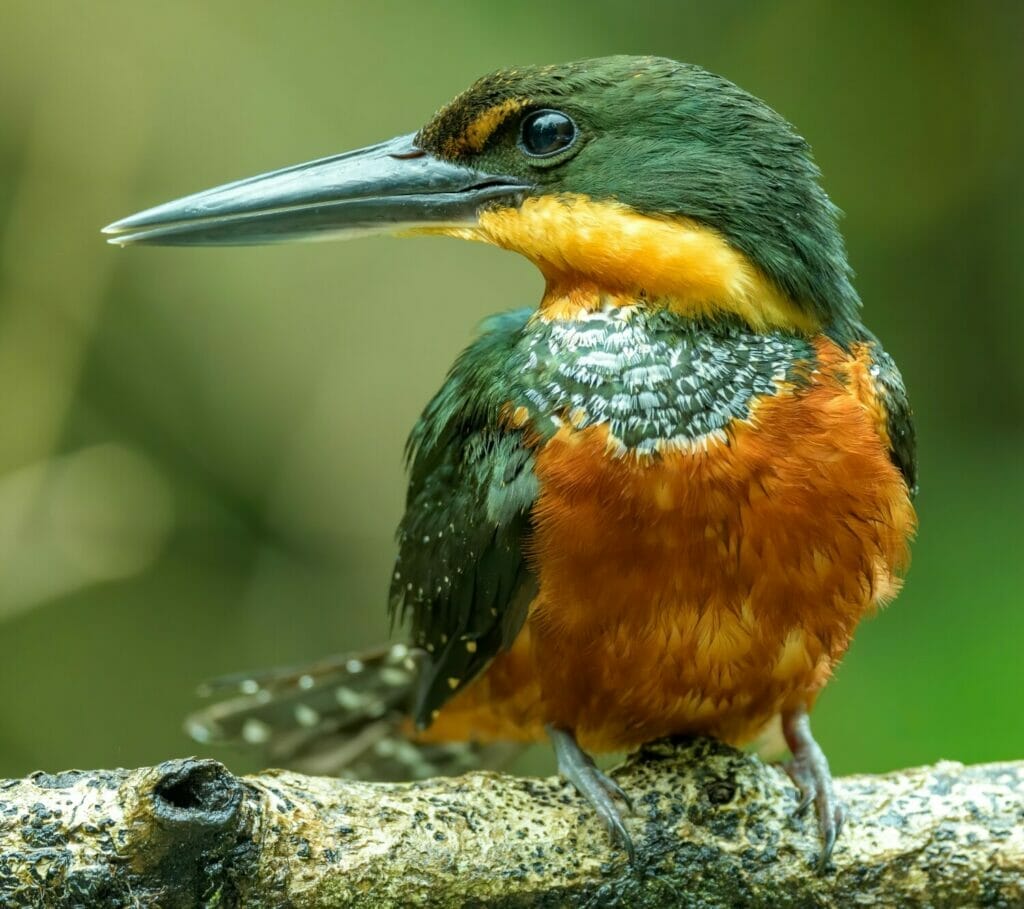
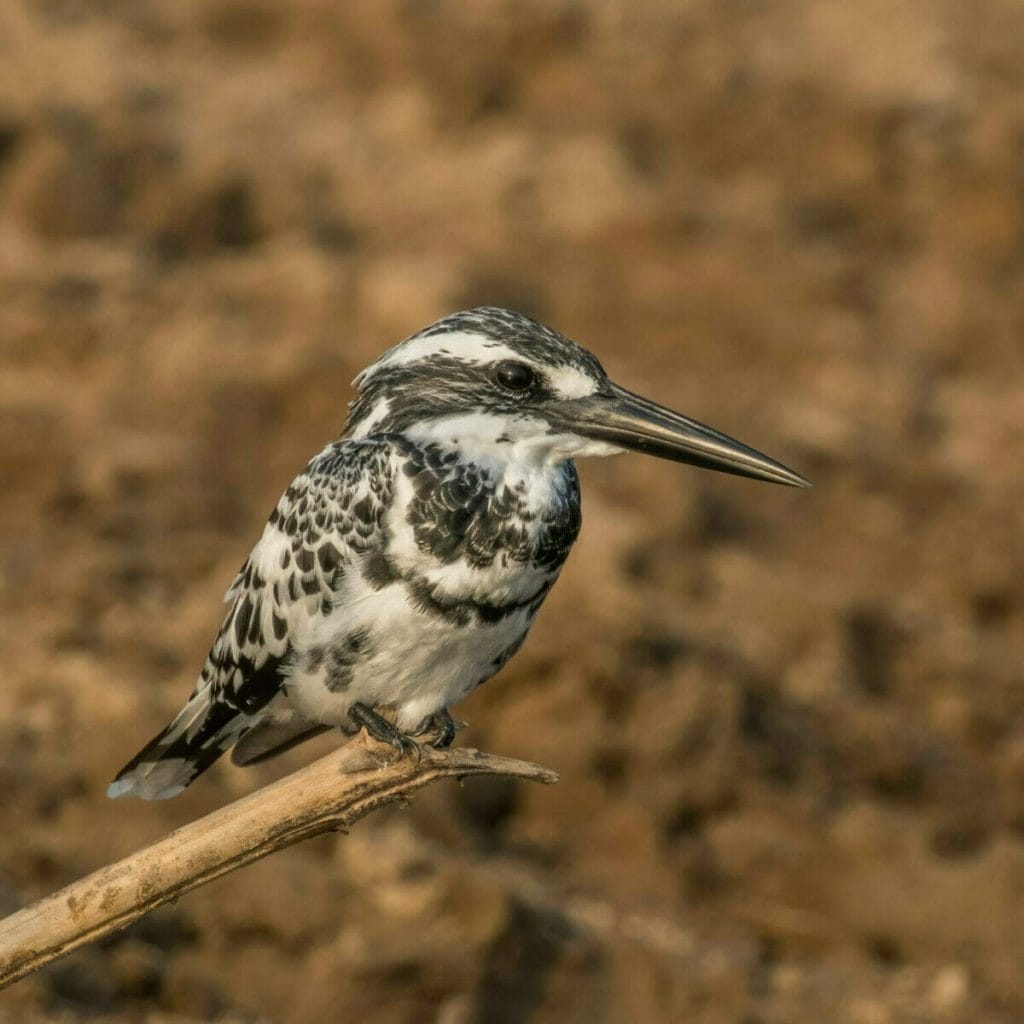
What Do Kingfishers Eat?
Kingfishers have a variety of food that they eat. They are not pescetarian carnivores as their name suggests, although some specialize in eating fish and are piscivorous. They are phenomenal hunters, and their diet consists of mostly insects, crustaceans, frogs, lizards, spiders, worms, grasshoppers, and fish.
The species of kingfishers found in more woodland areas eat more insects and grasshoppers. The species that live near water, like rivers, lakes, or oceans, will include fish in their diet as they are excellent fishers.
They usually find a perch to observe and hunt from. Once they have struck their prey with swooping elegance, they return to the perch and beat it against it. This beating is to kill and break bones, legs, spines, or anything sharp that could hurt it while swallowing. Any indigestible pieces are coughed up in little pellets.
Kingfisher Breeding and Nesting
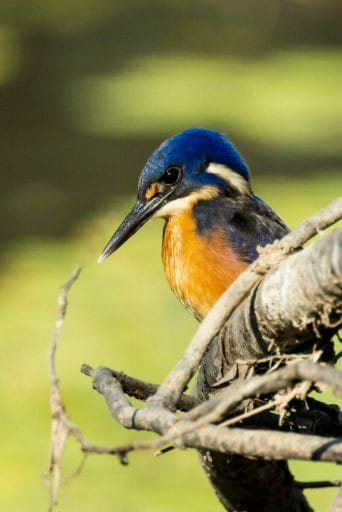
Kingfishers usually nest in tree cavities or burrows on the sides of riverbanks, sandbanks, or even termite mounds. They sometimes have a strange way of burrowing or breaking the soil by flying into the air and diving beak first down. If the soil is hard, it will ram it over and over again. This air ramming can go on for a few days and has led to injury in some cases.
The length depends on the soil substrate. If the soil is softer, kingfishers will dig a longer, deeper tunnel. In the case of a termite heap, where the soil is hard, the tunnel will be much shorter. The giant kingfisher of South Africa can excavate tunnels up to 28 feet in length.

The nesting digging duties are shared between the breeding pair. They are generally monogamous and territorial birds, with the pair taking turns to incubate the eggs. Some species lay two eggs and others up to 10, with the incubation period being about three weeks.
Author Note: The kingfisher is protected, and enthusiasts should not photograph their nests in the UK without a license. Please check your local kingfisher’s status before photographing and unintentionally disturbing them during breeding.
Each chick can eat up to 12-18 fish a day and has a disorderly order to feed as the chicks eat in rotation. As the one gets fed, it moves to the back to digest, and the other moves forward.
In some species like the kookaburra, cooperative breeding occurs. This is when the breeding pair helps the rest of the group raise and protect the nestlings.
Humans and Kingfishers
Humans and kingfishers have had a long relationship. With its striking colors and a large head and oversized beak, and phenomenal hunting skills, humans have been in awe of the kingfisher for ages.
Polynesians believed the sacred kingfisher had control over the seas. In Borneo, there are two tribes with opposite views when seeing a kingfisher. The Dusun tribe has a negative reaction towards the oriental kingfisher and sees it as a bad omen. It was believed that if a warrior saw this kingfisher on the way to battle, he should turn around and go home. The other Bornean tribe sees the banded kingfisher as a good omen.

The ancient Greek myths have these birds as the marriage of Zeus and Hera.
In modern spiritual beliefs encountering the kingfisher is associated with vision, prosperity, and focus. This is due to its great colored, adaptable eyesight and effective execution.
The etymology of the kingfisher is unclear. The name seems to originate from “king’s fisher,” but it is not known why.
How to Attract Kingfishers
If you want to attract kingfishers to your garden or area, there are a few things to remember.
– They like to hunt in cleared areas with not a lot of obstruction in their view.
– They need a perch to observe from.
– Set up a pond or dam, or create the open perch area close to one
– They need food to hunt
If you have a pond or are building one and want to attract kingfishers, you will have to clear the vegetation around it. If possible, place the perch in the middle of the pond and stock it with some tadpoles and small fish under an inch in size.
Get a comfortable chair and your binoculars, and it might not be long before you get a visitor.
Do Kingfishers Make Good Pets?

Kingfishers do not make good pets. They are wild birds and roam the earth free. I think it’s the cruelest thing in the world to keep a bird from flying.
So, on the whole, it’s better to let wild birds be wild. In many places in the world, it is illegal to own a kingfisher. They are some of the world’s most beautiful creatures, and spotting them is rare. This is what makes it even more special when you see one. Please do not cage birds.
Conclusion
Kingfishers are brightly colored birds with large heads and unusually large beaks. They are found on all continents except Antarctica.
Kingfishers are carnivorous, and not all are piscivorous. They eat insects, frogs, crustaceans, and grasshoppers, while some do specialize in fish.
Author Note: Kingfishers nest in burrows, some in trees, but mostly they live on sandbanks and riverbanks. The nesting duties are shared, and in some species, cooperative breeding occurs. They lay between 2 and 10 eggs and take turns incubating the eggs.
The best time to see kingfishers is early in the morning after a summer storm. So set your alarm that night during the storm, clean your binoculars, and get your socks and gumboots ready. Rise early and get to the dam, pond, lake, ocean, or woodland.
Fly high friends!
FAQ
Have a look at the kingfisher’s bill. It has developed so that it is perfectly suited to diving into water in the most efficient way.
There are a few collective nouns for a group of kingfisher. They are: concentration, crown and realm. All very fitting.
Most of the time kingfishers are just going about their business, getting food for their family. However, like most birds, they will be aggressive if their chicks are threatened.




